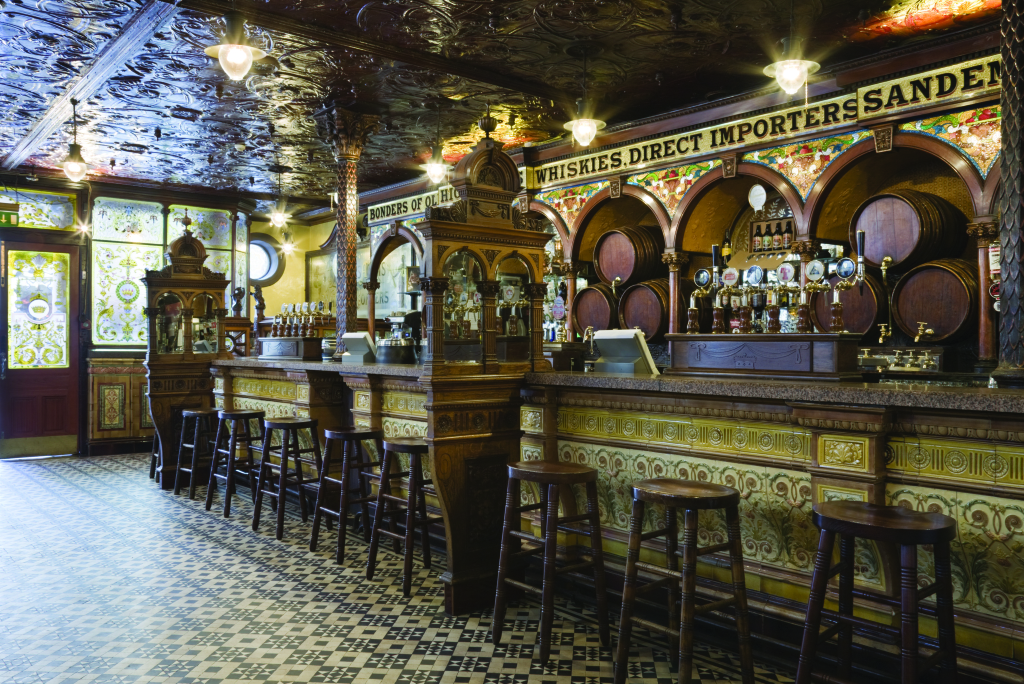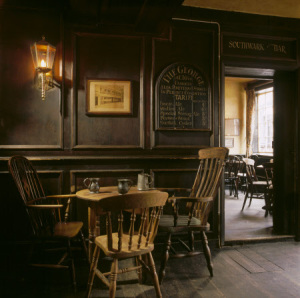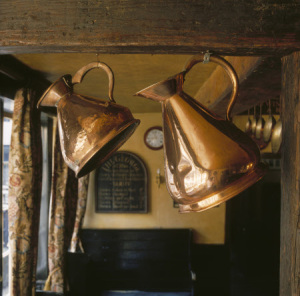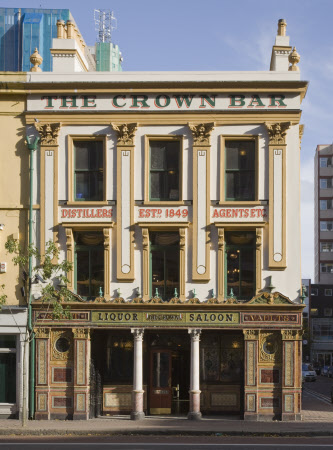Art historian and former Christie’s London Director of Studies, Ian Cox is a scholar of that most British of institutions: the pub. Joining Royal Oak this spring, Cox will illustrate the changing architectural history and interior style of Britain’s pub and show how new technologies and burgeoning social and economic changes led to the popularity of such lively establishments. We sat down with him to discuss their history and, of course, his favorite spots for a pint.
Royal Oak Foundation: How has the role of the pub changed over time?
Ian Cox: Pubs played an important role in a rapidly changing Victorian society in Britain. They had evolved from the taverns and ale houses of earlier times and though they essentially retained their role as private premises licensed to sell alcohol – their form and function changed to produce new types of establishment different from those that had existed before. For the expanding working classes the pub became not only a place of respite from the deprivations and drudgery of urban life, but an essential place of recreation and leisure at the heart of the community. It would be Victorian pubs that would act as meeting places for infant trade union movements and contribute to the emergence of such Victorian institutions as music halls in London and beyond.
Though village pubs in the Victorian period continued their traditional role, in the rapidly expanding towns and cities pubs evolved in response to a range of different types of social change. The emergence of gin palaces, for example, in the early 19th century, a new kind of drinking establishment, challenged the role of the traditional pub, introducing innovatory forms of layout and decoration, very different from that of old style taverns.
The development of new pubs was intimately connected with the development of the transport system in Victorian Britain and as traditional stage coach hubs in places like Holborn in London declined in importance and the pubs near them went into decline, so the emergence of large railway station termini at Euston, Kings Cross and St Pancras led to the building of new, lavishly decorated pubs serving passengers on the newly opened lines.
ROF: What is your favorite pub in the United Kingdom?
IC: This is a difficult question to answer as I have many in different parts of the country. I still have a penchant for old-fashioned country village pubs which provide excellent destinations for an evening drink or a leisurely lunch by a village green or beside a river – but few of these are of 19th-century origin.
Thinking about the Victorian period, which will be the focus of the Royal Oak lectures in the States, I would have to highlight the Barton Arms in Birmingham which I visit with students every July. Built in the late 19th century, this “Jacobethan” style building has surviving interiors complete with original fixtures and fittings and wonderful installations of stained glass and majolica tiles. There are even pictures of hunting scenes entirely made from hand-painted tiles!
The Philharmonic in Liverpool and The Blackfriar in central London are also memorable for their Edwardian Arts and Crafts inspired interiors. All of these pubs date from the “golden age” period mentioned above.
ROF: Why are pubs so historically significant? What role has the National Trust played in their preservation?
IC: The history of pubs in Britain is intriguing and those that survive in traditional form today, from different periods, provide us with a visual insight into dimensions of social history not seen in other types of building. This, at a time when pubs have been closing down at a rate of hundreds every year – they are a disappearing feature of the British rural and urban landscape.
The National Trust has recognized the important part pubs have played in the development of British society. It owns and administers over 60 pubs of historic interest in England, Wales and Northern Ireland today and the most famous is probably the George Inn in Southwark, London; but this is not of 19th-century origin. The best Victorian pub owned by the National Trust is the Crown Bar in Belfast, Northern Ireland and this has retained impressive interiors well worth visiting.







